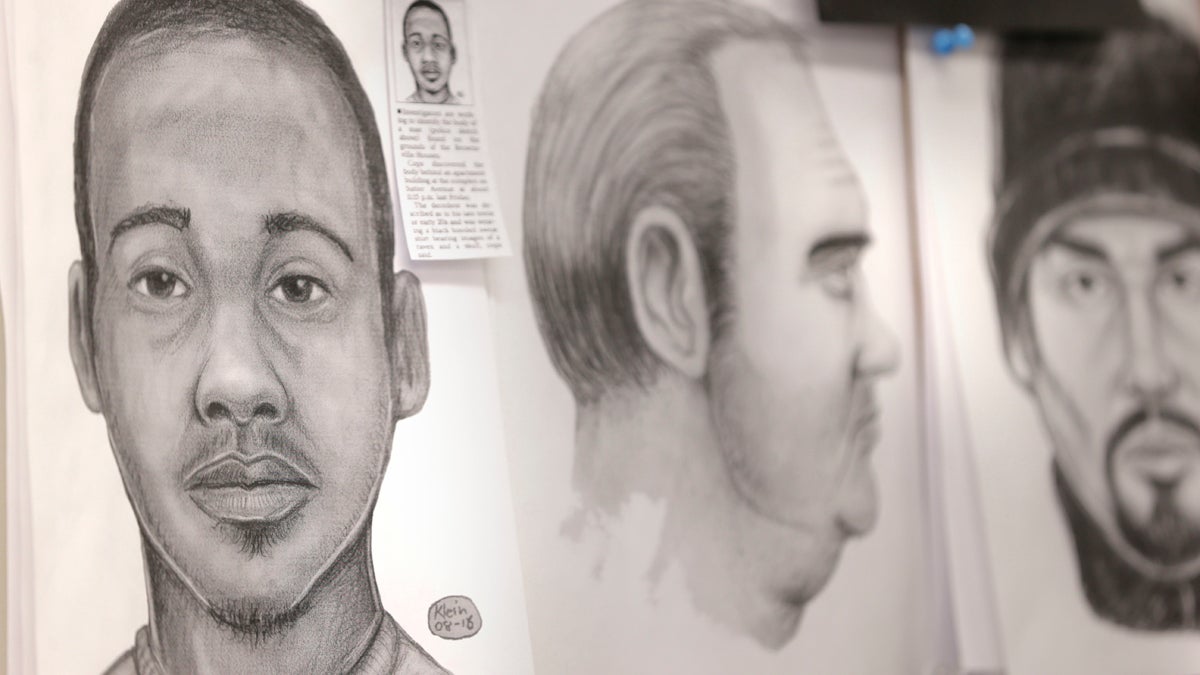Pa. district attorneys urge standards to strengthen witness identification process
Listen
A sketch by police officer Matthew Klein of an unidentified man who committed suicide is displayed above Klein's work station in the NYPD Artist Unit in New York. (Seth Wenig/AP Photo)
Give a witness six or eight pictures, one of which may be of someone suspected of committing a crime. Ask the person to select one.
It sounds simple, but a lot can go wrong without any rules, according to Chester County District Attorney Tom Hogan, who is also chairman of the Pennsylvania District Attorneys Association.
“I once saw a case where they included the suspect’s brother in the identification panel,” he said. “Not surprisingly, it was hard to tell the two of them apart.”
On Tuesday, the association announced the state’s first standard set of protocols in an attempt to ensure a “fair and reliable” identification process. Eyewitness identification has been fingered as the single biggest contributing factor to false convictions — later overturned with DNA evidence — by the Innocence Project, a watchdog group.
Starting in 2014, the association’s best practices committee work-shopped different procedures before coming up with a series of protocols. It now has a standard set of instructions and paperwork for police departments across the commonwealth to use. Among the recommendations is “blind” administration, meaning the person asking the witness to select among the photographs should have little to no firsthand knowledge of the case.
“That way, there’s no bias,” said Hogan. “No prejudice involved by the administrator of the test.”
Other recommendations include documenting the eyewitnesses’ responses during the process and making sure they know that they person they saw may not appear in the pictures at all.
The guidance and instructions shared with reporters are improvements, but they could go further to ensure accuracy, according to Rebecca Brown, policy director with the Innocence Project.
One thing that would make the process stronger, and less prone to error, is recording how confident a witness feels about a selection at the time of the eyewitness identification panel.
“The reason a statement of confidence is so important is that confidence can be inflated” over time, said Brown. Shaky confidence may be shored up by positive feedback, leading prosecutors to build a case around bad evidence. A review of scientific literature on eyewitness identification by the National Academy of Sciences isolated confidence statements as a best practice, along with instructions, video-recording the process and blind administration.
WHYY is your source for fact-based, in-depth journalism and information. As a nonprofit organization, we rely on financial support from readers like you. Please give today.

